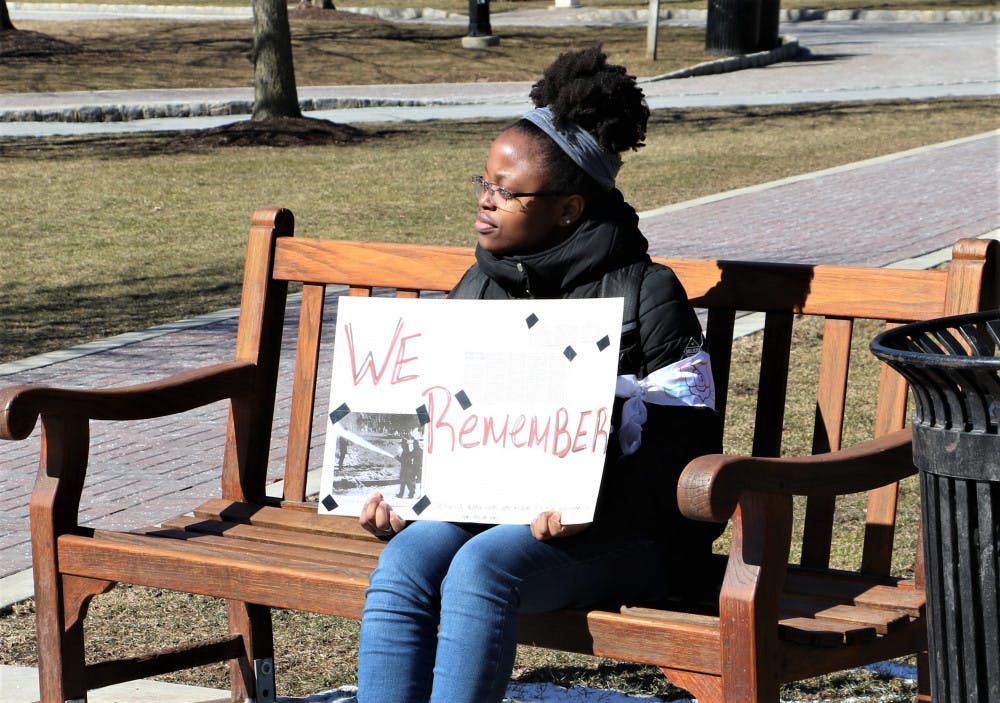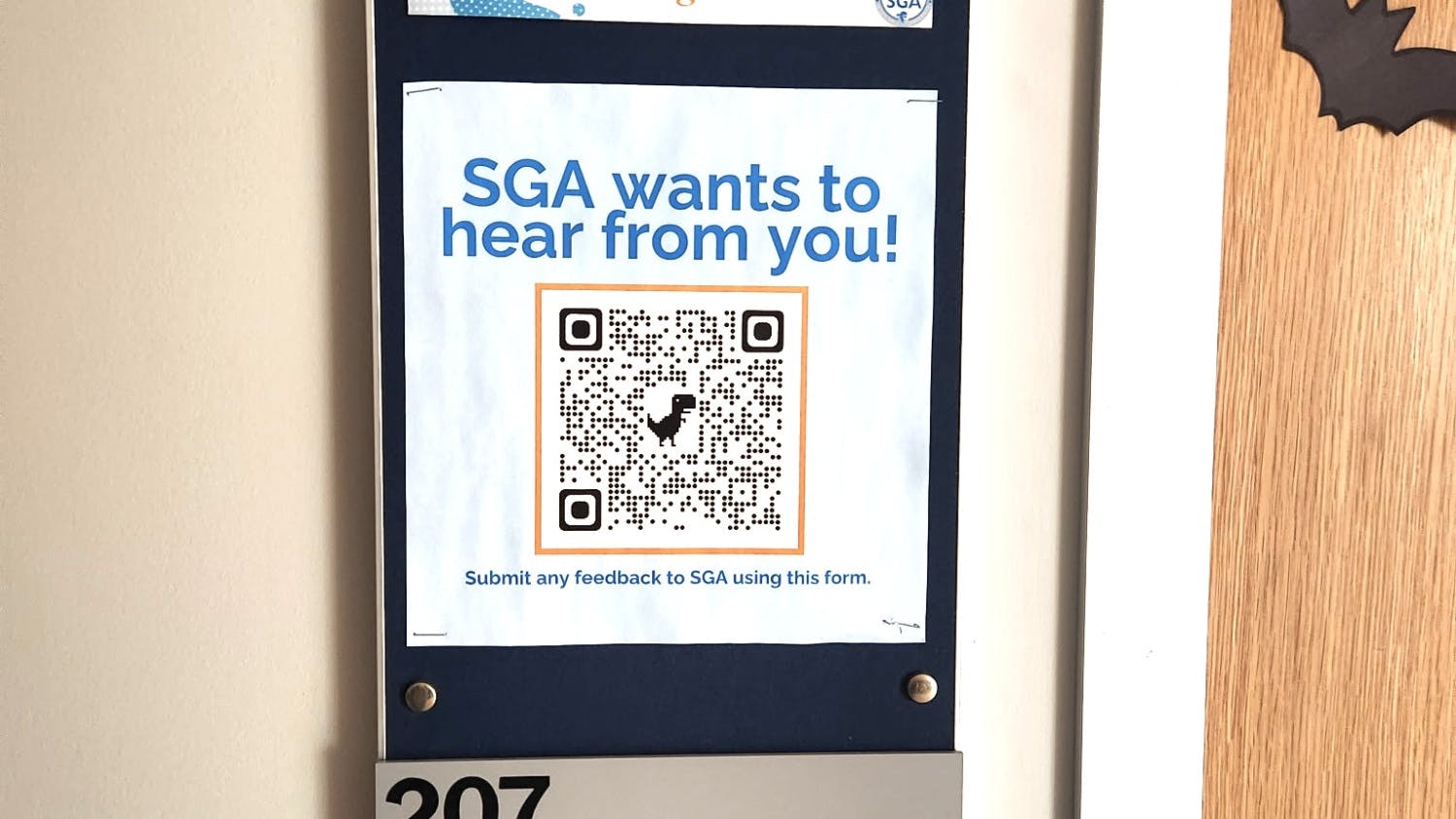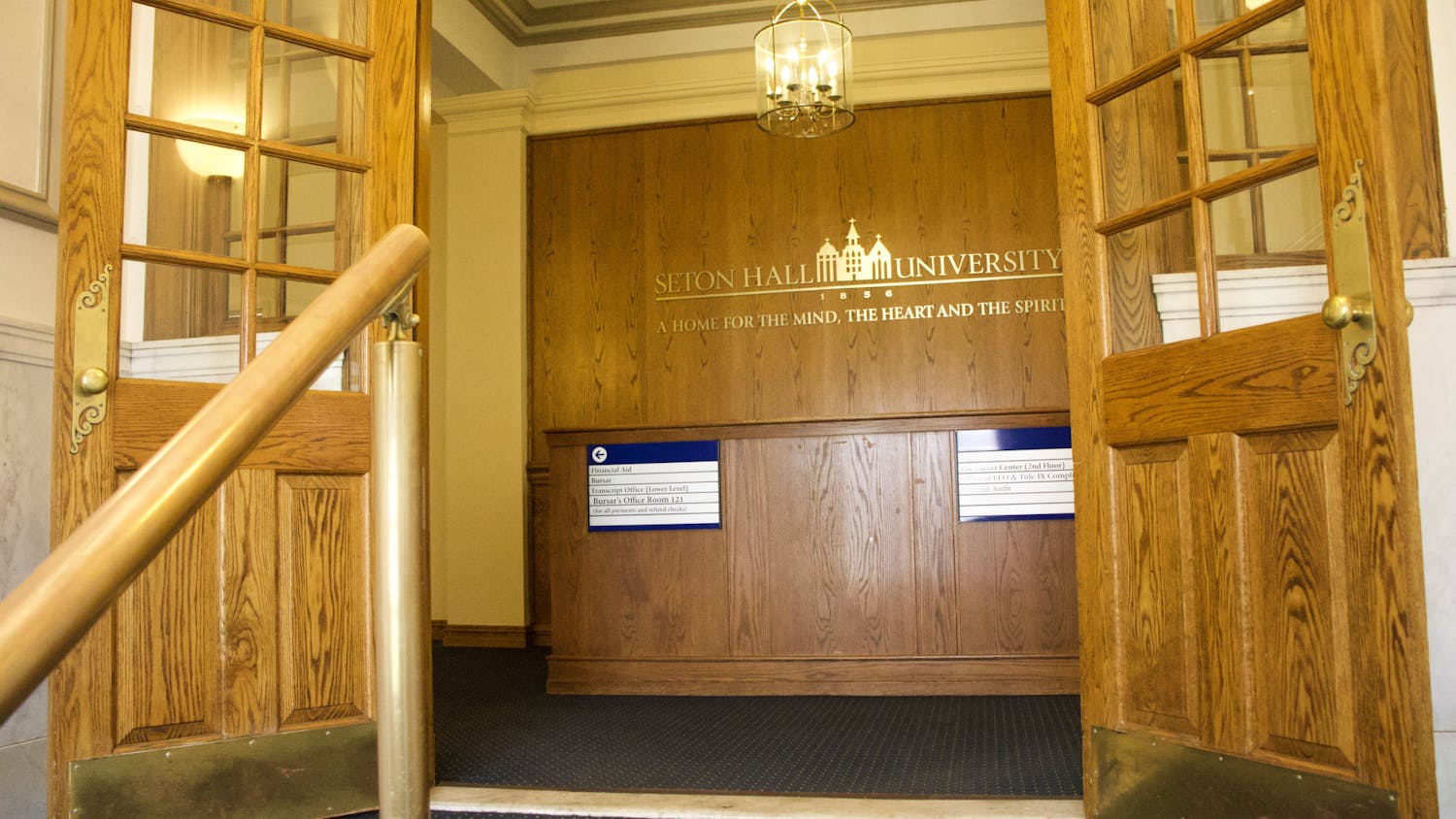The Seton Hall chapter of the Young Democratic Socialists of America (SHYDSA) held a demonstration on the University Green last Thursday to commemorate the anniversary of a 700 student protest on Seton Hall’s campus 55 years ago.
The protest was sparked by outrage over the suspension of The Setonian by then University president Rev. John J. Dougherty. Dougherty accused the paper of abusing “freedom of expression” after printing letters and editorials criticizing a school regulation on attire and prohibitions against picketing, as well as female visitors in off‐campus student apartments according to archival news wires from The Associated Press.
Dr. Don McKenna ’68, now a professor in Seton Hall’s College of Communication and the Arts, was a student at Seton Hall and a staff writer for The Setonian during the time of the suspension. McKenna recalled that communication students were “irate” at the university’s action.

“The demonstration was not planned,” McKenna said. “It grew out of the student’s anger at what we saw as our First Amendment rights being taken away.
“At that time, the basement of Corrigan Hall was the student cafeteria with fraternities having tables for their brothers to gather. It was easy for myself and my Pi Beta Delta brothers to get the frat tables to march on President’s Hall in a mostly spontaneous demonstration.”
McKenna called the protest a “a logical reaction among us communication types.”
The protest soon spread from outside President’s, Hall where students shouted “we want the paper,” to South Orange Avenue when rumors began to spread that university administrators had evacuated from the building via the back entrance.
“One thing led to another, the students blocked South Orange Avenue, the South Orange police called the South Orange Fire Department and the Newark riot squads. The students refused to move. The firemen tried to clear the street with high-pressure water from their hoses.
“I suspect this was a less violent option than others,” McKenna recalled, though accounts seem to differ on whether or not a police officer or firefighter was injured after protestors begun fighting back with snowballs after the hoses were turned on. “None of them had ever dealt with this type of student demonstration,” he said.
Soon after, students began to disperse from the protest on their own accord.
In the aftermath, McKenna sat on the committee which was formed by administration to formulate an action plan on how to proceed with the publication of the paper. The committee resulted in a constitution from which the current Setonian bylaws are based.
The document established new limits on the administration’s ability to interfere with editorial decisions by The Setonian and denied the administration the right to suspend the paper single-handedly. After the paper’s reinstatement later that year, McKenna assumed the role of the paper’s news editor and eventually rose to the position of Editor-In-Chief.

“The Setonian protest of 1964 became a case of testing how far the notion of freedom of the press could be taken,” said Seton Hall University Archivist Alan Delozier. “University administrators viewed some of the content found in various editorials from late 1963 to early 1964 as being a ‘misrepresentation of facts’ which became the basis for suspension set forth by school officials.”
“This episode in school history is one that represents an era when college-age students were taking a more thoughtful look at society at large and their place on campus in particular,” he said.
Delozier also mentioned that the rallies held by students during February 1964 in the wake of the suspension “showed a popular and mindful look at the need for a student publication to present their viewpoint in print for all to see.”
“However, the violence exhibited during a mass march in South Orange was an unfortunate aspect of this process toward mutual understanding,” he added. “But in regard to the positives, more open administration-student centered communication aided the situation and led to a resumption of The Setonian on April 16, 1964.”
Delozier said that it was through this process that the legacy of The Setonian prevailed and that the paper continues to present “valuable student perspective and important news regarding campus activities for the Seton Hall community to this day.”
McKenna also recalled the importance of the protest within the greater context of its time.
“This was one of the first student demonstrations of the 1960s and got wide press coverage,” he said. “It was big news: students fight off firemen with snowballs to protest the violation of their First Amendment rights. We were angry because our rights as guaranteed by the Constitution were violated. Part of the context is that this happened on a Catholic campus in a quiet suburban town. This wasn’t Columbia or Berkeley. And again, this was the precursor to the major student demonstrations across the country later in the decade. Seton Hall was a leader in campus demonstrations.”
Adam Varoqua, President of the SHYDSA, said that their demonstration was meant to show that the ideals of the 700 protestors on South Orange Avenue in 1964 haven’t been left in the past, even half a century later.
“The right of those to assemble and the right of the free press to be uncensored,” Varoqua said. “It’s incumbent upon us as a community to not forget the past as it highlights important moments in our history. Seton Hall students stood up and protested for the rights of their fellow peers, despite the push-back from the local law enforcement at that time.”
Varoqua also added that “Seton Hall Democratic Socialists vow that we will never forget that historic event and that we will always stand up against oppression.”
McKenna said he admired the students who partook in last Thursday’s demonstration. “They are bright, aware young people who not only understand their past but are willing to stand up and defend the civil rights of all of us,” he said. “They personify the best that Seton Hall has to offer.”
As to the state of today’s Setonian, McKenna offered a piece of wisdom from an old editor: “However you decide to write your story, making sure you can write it the way you judge best is the reason why we demonstrated in 1964.”
Nicholas Kerr can be reached at nicholas.kerr@student.shu.edu. You can also find him on Twitter @NickKerr99.
Adam Varoqua, who contributed to this article, is a staff writer for The Setonian.





